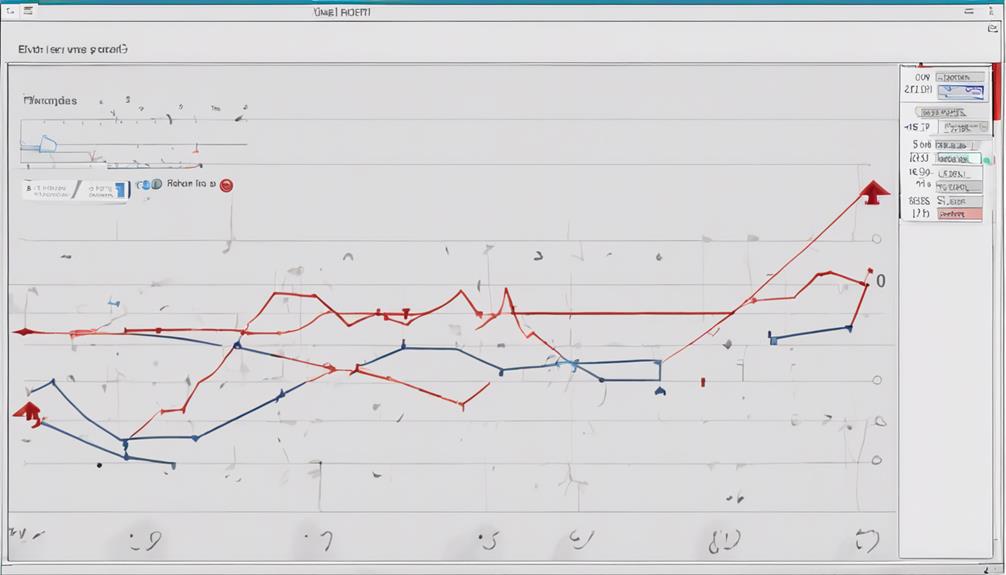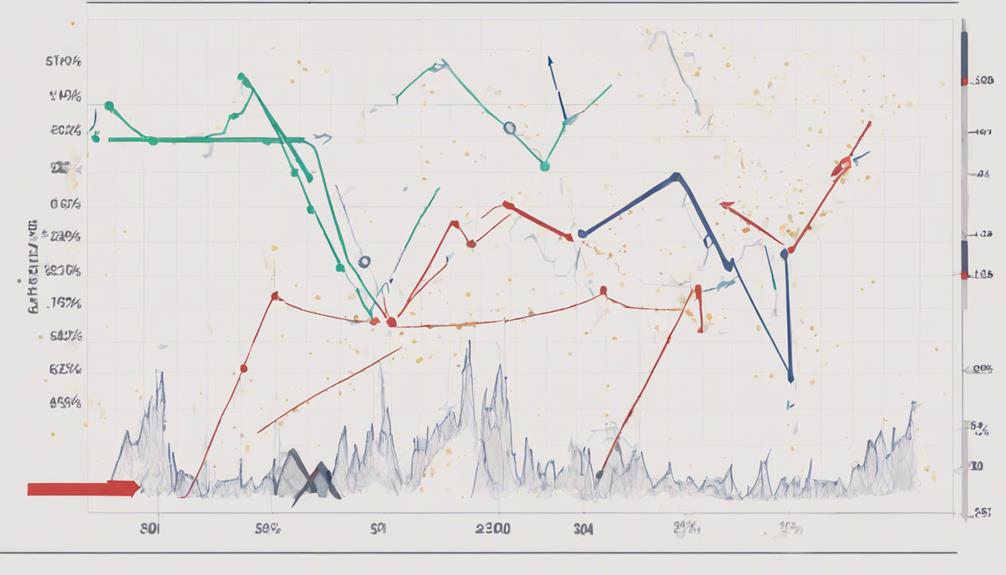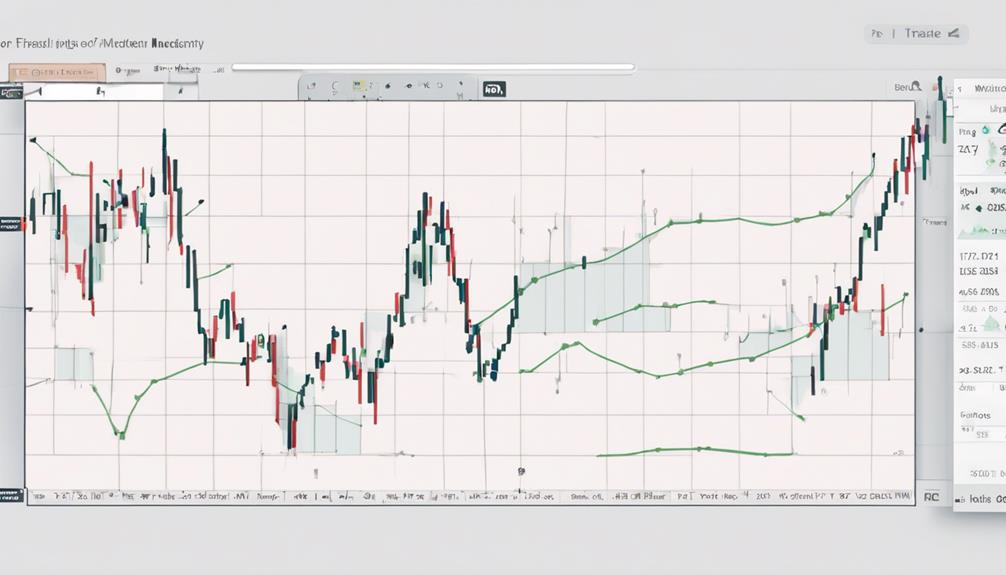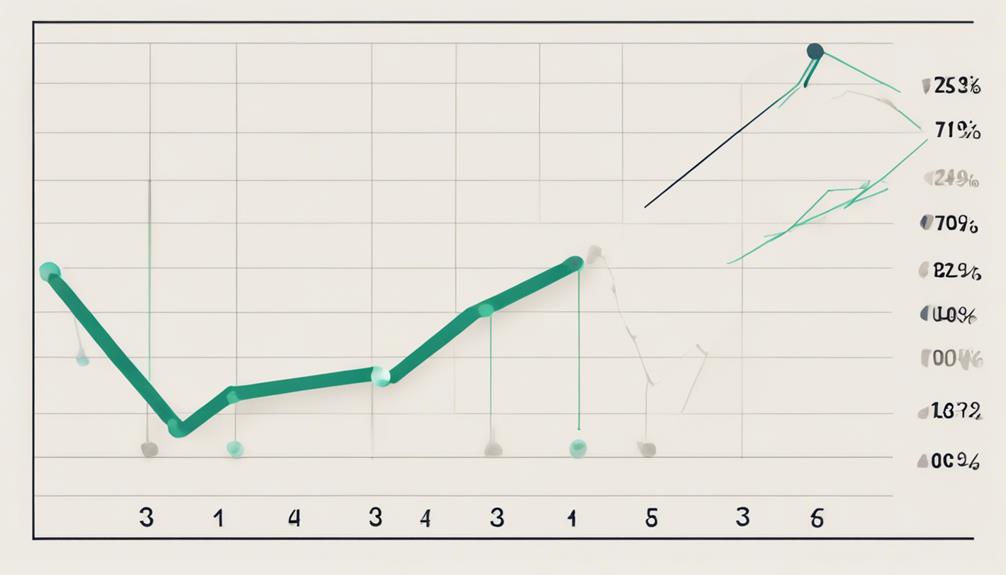As traders navigate the complexities of the financial markets, the Rate of Change (ROC) indicator emerges as a valuable tool for evaluating price movements and trend dynamics.
However, understanding the nuances of interpreting ROC values goes beyond mere calculations.
By delving into the intricacies of ROC interpretation techniques, traders can unlock a deeper level of analysis that transcends the surface-level bullish and bearish distinctions.
Stay tuned to uncover the subtleties of ROC interpretation and how it can elevate your trading acumen to new heights.
ROC Indicator Calculation Process
The ROC indicator calculation process involves comparing the current price to the price n periods ago and expressing the change as a percentage. This financial indicator plays a crucial role in technical analysis by providing insights into the rate of change in the closing price over a specific number of periods.
By applying the formula ((Current Price – Closing Price n periods ago) / Closing Price n periods ago) * 100, traders can quantify the momentum shifts within a security. The ROC indicator is a valuable tool for assessing the speed at which prices are changing, aiding in the identification of potential trading opportunities.
Positive ROC values above 0 indicate bullish momentum, signaling an upward price trend, while negative ROC values below 0 suggest bearish momentum, indicating a potential downward price trend.
Understanding the ROC calculation process is fundamental for traders looking to interpret price movements accurately and make well-informed trading decisions based on financial data and technical analysis.
ROC Indicator Interpretation Techniques

Utilizing the Rate of Change (ROC) indicator in technical analysis enables traders to gauge momentum shifts and potential price trends accurately. When interpreting the ROC indicator, traders should consider the following techniques:
- Identifying Momentum: ROC values above 0 indicate bullish momentum, while values below 0 suggest bearish sentiment, aiding traders in understanding the prevailing market direction.
- Spotting Divergence: Divergence between price movements and ROC can signal potential trend reversals or strength, serving as a crucial indicator for traders to anticipate changing market dynamics.
- Confirmation Tool: Traders often use ROC in conjunction with other technical indicators like RSI, Stochastic oscillator, and MACD to confirm signals, enhancing the reliability of their trading decisions.
Trading Strategies Using ROC Indicator

Implementing trading strategies with the ROC indicator involves strategically utilizing its signals to capitalize on market trends and price fluctuations efficiently. The ROC indicator helps traders identify overbought and oversold zones, providing potential buy/sell signals. Utilizing ROC crossovers, especially around the zero level, can indicate trend changes, offering valuable insights for traders.
Moreover, ROC is effective in confirming trend strength and sustainability when aligned with price trends, enabling traders to make informed decisions. Integrating ROC with other indicators such as RSI, Stochastic oscillator, and MACD can enhance trading strategies by providing a more comprehensive view of the market dynamics.
It is essential to note that ROC is particularly well-suited for trending markets, where it can offer significant advantages in understanding trend direction and momentum. By incorporating ROC into a holistic trading strategy, traders can gain a competitive edge in the market and improve their overall trading performance.
Advantages of ROC Indicator

Building on the effectiveness of the ROC indicator in confirming trend strength and sustainability, its advantages extend to providing timely reversal signals and enhancing trade timing for improved decision-making.
The advantages of the ROC indicator include:
- Identifying Potential Turning Points: ROC helps traders anticipate potential reversals in price trends, allowing for strategic entry and exit points.
- Versatile Across Financial Instruments: From stocks to commodities and currencies, the ROC indicator can be applied to various markets, enhancing its usability.
- Enhanced Trade Timing: By offering timely reversal signals, ROC assists traders in improving their decision-making process and maximizing opportunities in the market.
Limitations of ROC Indicator

While the Rate of Change (ROC) indicator offers valuable insights into market trends and trade timing, it is important to acknowledge its limitations in practical application.
One significant limitation of ROC is its high false signal rate, especially when used in lower timeframes. Traders often experience varied signals due to different calculation formulas, leading to potential confusion when interpreting the indicator on various trading platforms.
To mitigate this issue, smoothing ROC with moving averages can enhance its performance by reducing noise in signals. Despite these limitations, ROC remains a popular choice in trend and swing trading strategies for its effectiveness in identifying trend changes.
Traders should be cautious when using ROC in shorter timeframes and consider applying additional filters or confirmation tools to reduce the impact of false signals. Platforms like LiteFinance offer ROC for testing and implementation, providing traders with the opportunity to explore strategies for optimizing ROC's effectiveness in their trading decisions.
Can the Rate of Change Indicator Help in Interpreting Data?
The rate of change indicator, also known as ROC, can be a valuable tool in interpreting data. By calculating the percentage change in a specific period, it helps to identify trends and potential turning points in the market. This rate of change indicator explanation can be essential for making informed decisions in trading and investing.
Frequently Asked Questions
How Do You Read a Rate of Change Indicator?
A Rate of Change (ROC) indicator is read by analyzing its value in relation to zero. Values above 0 indicate a bullish trend, below 0 signify a bearish trend, and near 0 suggest a neutral trend. Divergence from price can indicate potential trading opportunities.
How Do You Read Rate of Change?
Rate of Change (ROC) is a momentum indicator that quantifies the percentage difference between the current price and a past price point. Positive ROC signifies an uptrend, while negative values suggest a downtrend, aiding traders in gauging market momentum and potential trading signals.
How Does the ROC Indicator Work?
The Rate of Change (ROC) indicator calculates the percentage change between the current price and a previous price, aiding traders in assessing price momentum. Positive values indicate upward momentum, while negative values suggest a downward trend.
How Do You Read a Trix Indicator?
When reading a Trix indicator, observe the line's direction for momentum clues. Rising Trix signals increasing momentum, while falling Trix indicates decreasing strength. Look for crossovers above zero for potential buy signals and below for sell opportunities.
Conclusion
In conclusion, the Rate of Change (ROC) indicator serves as a valuable tool for traders seeking to analyze market trends and make informed trading decisions.
By calculating and interpreting ROC values, traders can gain insights into price momentum and potential trading opportunities.
While the ROC indicator has its limitations, its advantages in providing trend strength analysis are undeniable.
Embracing the ROC indicator's power can lead traders to unlock a treasure trove of trading insights and opportunities.
